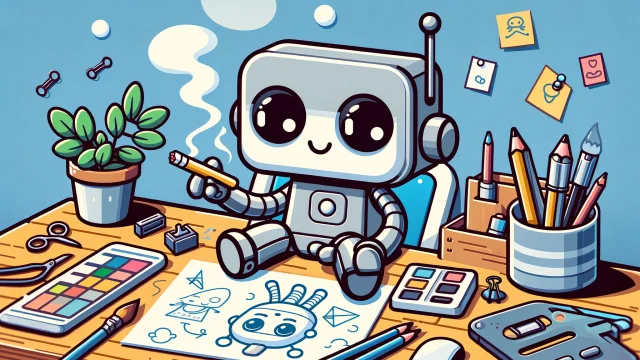Resurrection in Dragon Ball: Exploring Themes of Revival and Rebirth
- Resurrection in Dragon Ball: Exploring Themes of Revival and Rebirth
- 1. Resurrection in the Dragon Ball Universe
- 2. Iconic Resurrections in Dragon Ball
- 3. Thematic Significance of Resurrection
- 4. The Rules of Resurrection
- 5. Resurrection in Dragon Ball Movies
- 6. Resurrection in Dragon Ball Games
- 7. Fan Perspectives on Resurrection
- 8. Conclusion: Resurrection as a Core of Dragon Ball
Resurrection in Dragon Ball: Exploring Themes of Revival and Rebirth
The concept of resurrection plays a central role in the Dragon Ball series, offering a unique blend of drama, hope, and high stakes. Whether it’s Goku’s heroic return to save the Earth or a villain’s unexpected revival to wreak havoc, resurrection keeps the narrative dynamic and unpredictable. The Dragon Balls themselves, mystical artifacts capable of granting any wish, often serve as the primary tool for bringing characters back to life.
This article delves into the role of resurrection in Dragon Ball, highlighting iconic moments, the rules of revival, and its thematic significance.
1. Resurrection in the Dragon Ball Universe
1.1 The Role of the Dragon Balls
- The titular Dragon Balls are powerful relics created by the Namekians.
- When gathered, they summon Shenron (or Porunga on Namek), who grants wishes, including the ability to resurrect the dead.
- Limitations of resurrection:
- Shenron can only revive someone who died of natural causes once.
- Porunga, however, can revive a person multiple times.
1.2 Different Methods of Resurrection
- Dragon Balls: The primary means of revival, often used for individuals or entire groups (e.g., reviving everyone killed by Majin Buu).
- Divine Intervention: Characters like Goku have been revived by the Kais for specific purposes.
- Technology: Villains like Frieza have been resurrected through advanced technology, blending science with fantasy.
2. Iconic Resurrections in Dragon Ball
2.1 Goku’s Heroic Returns
- First Resurrection: During the Saiyan Saga, Goku sacrifices himself to defeat Raditz and later returns to life with the help of the Dragon Balls.
- Second Resurrection: After his death during the Cell Saga, Goku chooses to remain in the afterlife but is temporarily resurrected during the Buu Saga to help save Earth.
2.2 Frieza’s Resurrection
- Dragon Ball Z: Resurrection ‘F’: Frieza’s soldiers use Earth’s Dragon Balls to bring him back to life. This sets the stage for a rematch with Goku and Vegeta, showcasing Frieza’s transformation into his Golden form.
2.3 Krillin’s Emotional Revivals
- Krillin’s multiple deaths and subsequent resurrections highlight the stakes of the battles and the importance of the Dragon Balls in maintaining hope.
2.4 Vegeta’s Redemption
- Although not a traditional resurrection, Vegeta’s revival after his sacrifice against Majin Buu is symbolic of his journey from villain to hero.
3. Thematic Significance of Resurrection
3.1 Hope and Second Chances
- Resurrection embodies the theme of hope, showing that even in the direst situations, there’s a chance for redemption or resolution.
- Characters like Vegeta and Frieza are given opportunities to evolve, whether for good or evil.
3.2 High Stakes
- While resurrection offers hope, the limitations placed on it ensure that death retains its weight in the story.
- Examples include the desperation during the Namek Saga, where multiple characters are killed before the Dragon Balls can be used.
3.3 Exploring Mortality
- Resurrection allows Dragon Ball to explore questions of life, death, and purpose, especially in arcs like the Other World Tournament and Goku’s extended stays in the afterlife.
4. The Rules of Resurrection
4.1 Earth’s Dragon Balls
- Can revive multiple people simultaneously.
- A person can only be resurrected once by Shenron.
4.2 Namek’s Dragon Balls
- Porunga can revive the same person multiple times, but only one person per wish (or groups with revised rules).
4.3 Super Dragon Balls
- These multiverse-sized Dragon Balls grant limitless wishes, including unrestricted resurrections.
5. Resurrection in Dragon Ball Movies
5.1 Dragon Ball Z: Resurrection ‘F’
- One of the most iconic films in the franchise, this movie centers on Frieza’s return and his quest for revenge against Goku and Vegeta.
5.2 Dragon Ball Super: Broly
- While not centered on resurrection, the film touches on themes of survival and reinvention, particularly with Frieza’s return after the events of Resurrection ‘F’.
6. Resurrection in Dragon Ball Games
6.1 Gameplay Mechanics
- In many Dragon Ball games, resurrection is integrated into mechanics:
- Dragon Ball Xenoverse: Players can revive fallen allies during missions.
- Dragon Ball Z: Kakarot: Story-driven resurrections mirror the anime and manga.
6.2 DLC and Updates
- Games often expand on resurrection-themed storylines, such as battles against revived villains.
7. Fan Perspectives on Resurrection
7.1 Symbol of Optimism
- Fans appreciate resurrection as a symbol of the series’ optimistic tone, balancing its intense battles with moments of emotional catharsis.
7.2 Criticism of Overuse
- Some fans argue that frequent resurrections diminish the stakes of death, particularly in later arcs.
8. Conclusion: Resurrection as a Core of Dragon Ball
Resurrection is more than a plot device in Dragon Ball—it’s a reflection of the series’ themes of hope, growth, and the cyclical nature of life and conflict. Whether it’s a hero’s triumphant return or a villain’s vengeful revival, the concept keeps the narrative fresh and engaging.
As Dragon Ball continues to expand with new stories and characters, the theme of resurrection remains a vital thread, reminding fans that every end is a new beginning in the world of Goku and his friends.

